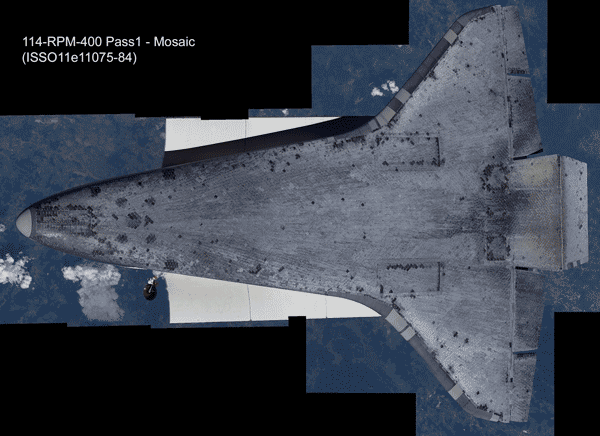On February 1, 2003, the Space Shuttle Orbiter Columbia suffered catastrophic structural failure during reentry, tragically killing all seven crewmembers on board. An extensive investigation into the accident was conducted in the ensuing months and identified that foam debris-induced damage to the reinforced-carbon-carbon wing, leading edge thermal protection system was the most probable root cause of the failure. During the course of the investigation, the Columbia Accident Investigation Board (CAIB) made a number of recommendations, which NASA agreed to implement before returning the Shuttle fleet to flight.
One of these recommendations, R3.8-2, addressed the need for computer models to evaluate thermal protection system damage that may result from debris impact. It reads:
Develop, validate, and maintain physics-based computer models to evaluate Thermal Protection System damage from debris impacts. These tools should provide realistic and timely estimates of any impact damage from possible debris from any source that may ultimately impact the Orbiter. Establish impact damage thresholds that trigger responsive corrective action, such as on-orbit inspection and repair, when indicated 1.
Implementing this recommendation was no small task, and involved hundreds of personnel from NASA, Boeing, The United Space Alliance, and other organizations. The result of this effort was the creation of a family of analysis tools that are used during the course of a Shuttle flight to assess the aerothermal, thermal, and structural impacts of a given damage site. These tools necessarily cross disciplines because, ultimately, the health of the vehicle depends on the coupled interaction of these three fields. The suite of tools spans the range of complexity from closed-form, analytical models to three-dimensional, chemical nonequilibrium Navier-Stokes simulation of geometrically complex configurations.
The focus of this article is to overview the damage assessment process, which is now a standard part of every Shuttle mission. The primary focus will be one aspect of this process, namely the rapid development of high-fidelity, aerothermal environments for a specific damage configuration using computational fluid dynamic (CFD) models 2 3. The application of such models requires immediate and reliable access to massively parallel computers and a high degree of automation in order to meet a very aggressive schedule. The remainder of this article is outlined as follows: Section 2 provides an overview of the damage assessment process and required timeline, Section 3 describes the role of high-performance computing in rapidly generating aerothermal environments and associated challenges, Section 4 details the specific example of damage that occurred on STS-118 during the summer of 2007, and Section 5 provides some observations and general conclusions, which may be applicable to any process which demands urgent computational simulation.
NASA and its commercial partners instituted a number of process and data-acquisition improvements during the two-and-a-half year lapse between the Columbia tragedy and Discovery’s historic return-to-flight mission. These improvements were specifically designed to identify and assess the severity of damage sustained to the thermal protection system during launch and on-orbit operations. The majority of such damage has historically been caused by foam or ice shed from the Orbiter/External Tank/Solid Rocket Booster ascent stack, but a limited amount of damage has also been attributed to micrometeor and orbital debris hypervelocity impacts.
A number of ground and air-based imagery assets provide video coverage of the vehicle’s ascent to orbit. These imagery data are intensely reviewed during the hours after launch to identify potential debris strike events. Multi-band radar assets are also deployed on land and at sea during the launch phase to identify any off-nominal signatures, which may be related to debris impact. Additionally, the wing-leading-edge structural subsystem of each Orbiter was instrumented with a suite of accelerometers to aid in the detection of potential debris strikes.
Once the vehicle is in orbit, there are additional procedures that are executed to help identify potential damage. On the second day of flight, two crewmembers perform a detailed scan of the reinforced-carbon-carbon wing leading edge and nose cap. This scan is specifically designed to detect very small damages that could potentially cascade into a catastrophic failure sequence during the extremely high temperatures of reentry.







